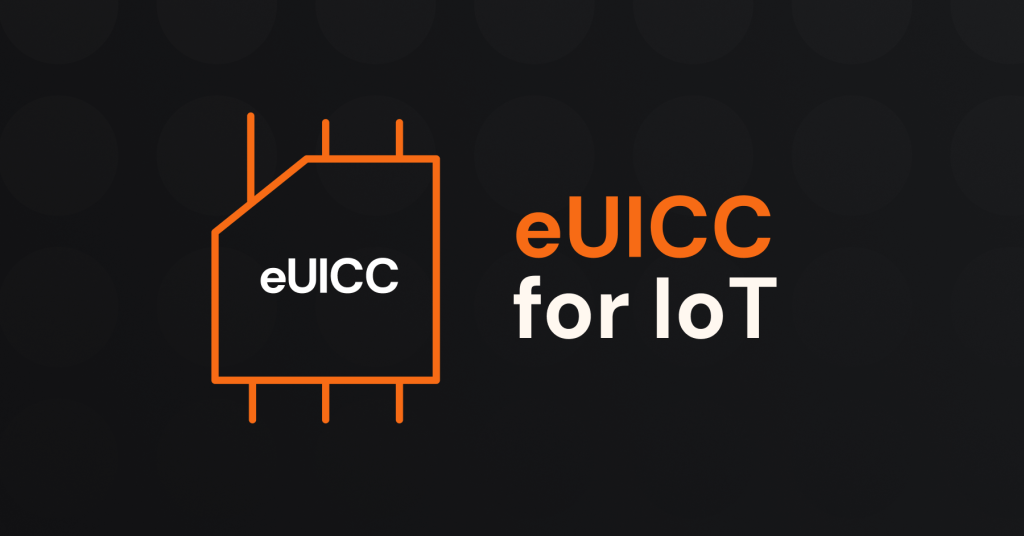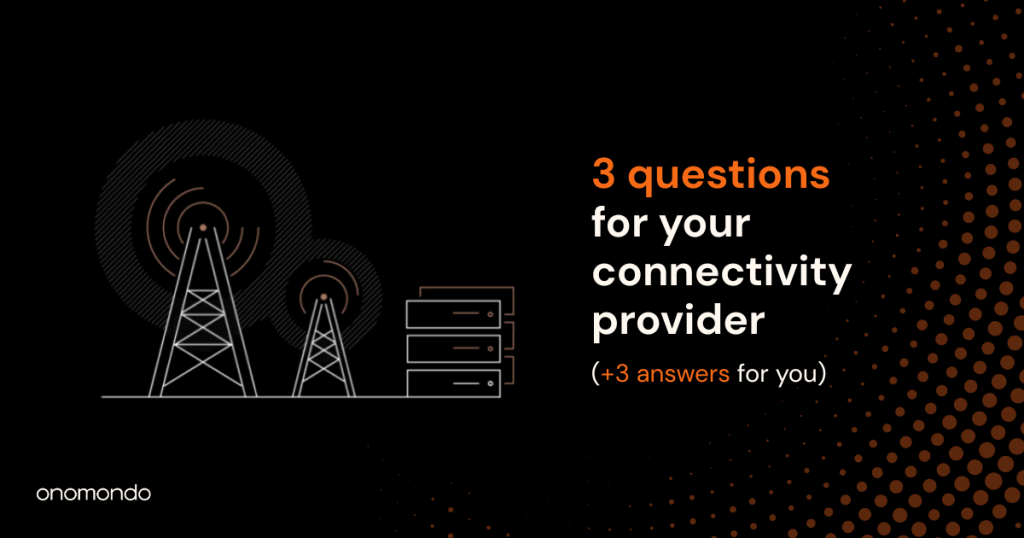Lightbug is a UK based IoT solution provider of smart asset tracking and analytics. Based in Bristol, Lightbug manufactures its devices and develops software in the UK. This level of control helps Lightbug create highly optimised solutions that stand out from other similar offerings in the market.
Smart asset tracking is an IoT application used across various industries. It’s hard to think of a business that doesn’t benefit from asset visibility.
Examples of how Lightbug helps customers
The Ocean Cleanup is a non-profit out to solve the problem of ocean waste. They put Lightbug trackers inside waste to gain insights on the journey of plastic waste with the ultimate aim to prevent waste from making it into the oceans.
PGA Tour uses high-frequency data to track players on the golf course. This information is then tied into their ShotLink System (drawing the ball path on screen) and helps users extract exciting stats.
Bakers Basco rents out baskets and trays to bakers around the UK. Recovering baskets is a significant problem in the industry. Bakers Basco used Lightbug to track a small portion of its inventory and saw a massive increase in the number of baskets recovered.
Lightbug and Onomondo first started working together in early 2021. Onomondo’s IoT stack and cellular network have given Lightbug the flexibility and control they were looking for, helping them focus on building better devices and adding value.
Let’s look at how the partnership opens up new use cases and helps IoT solutions deliver increased value.
One SKU
Producing and managing products for a global market is inherently more complex than purely local use cases. On top of this, connectivity often compounds issues not thought of during development.
However, thanks to Onomondo’s unique global network infrastructure, Lightbug can make devices that are globally deployable with no localisation needed for individual regions during manufacture. Network localisation can be handled during or after deployment on the network side thanks to Onomondo’s Network Lists.
Zero operator lock-in
Changing your connectivity provider is often not possible after deployment.
Suppose you change your cloud solution provider, want to switch to an operator with a better cost structure, access a new connectivity technology, or change eUICC platforms. In that case, businesses can only change operators if they physically swap SIMs.
The problem is that it’s often not possible to physically access devices and swap SIMs (further complicated with common soldered down MFF2 SIMs).
Onomondo found a way to compensate for long-term concerns by offering Freedom to Leave. Lightbug owns the SIMs they use, including the encryption keys. IoT companies thrive when they treat connectivity as a collaboration between partners and not an existential commitment.
It’s possible for Lightbug to leave Onomondo for another GSMA approved operator via an over-the-air (SMS) update, giving Lightbug customers confidence that upstream supply issues will not affect their critical operations.
PAYG pricing
Lightbug offers end-to-end, turnkey IoT solutions that can be customised if needed. Moreover, their solutions take away a lot of the complexity in development so that adopters have fewer barriers when bringing their ideas to market.
A big headache in IoT is managing cellular device subscriptions. It’s usually the case that SIMs are part of a subscription that keeps ticking even when devices aren’t creating value.
A key benefit of Lightbug and Onomondo’s partnership is that costs scale directly with revenue or data value. As a result, you can focus on solving the actual problem. For example, not spending time figuring out how you’re going to pay 3 EUR per month for all devices regardless of the value of data to you.
Onomondo offers flexible data pricing with billing for active devices only. Lightbug passes on this flexibility to its customers, delivering a pay as you go model, with each IoT “ping” costing as little as €0.02.
In short (and obviously), people only like to pay only when they use something and get value from it. Lightbug and Onomondo make that a reality in IoT.
Example: Hardware manufacturer
Lightbug has a collaboration with a high-tech drilling equipment manufacturer ($20k+ per machine). The cost of integrating IoT hardware is negligible for the manufacturer, but monthly fees are not.
Initially, they planned to limit “smart” features to their premium models, banking on those customers being happy to sign up for subscriptions to cover costs.
Lightbug’s ability to offer no fixed monthly subscription meant the hardware manufacturer could fit the smart modules into all devices and offer the upsell to all customers.
Integrating IoT into all devices tripled yearly hardware sales.
The takeaway is that IoT can add recurring revenue to your business. Customers will pay a monthly fee when the benefits are clear and desirable. Some examples of IoT adding value include discounted insurance, increased recovery rates, real-time field data, detecting abuse, etc.
“Competitors like 1NCE were almost there, but you still had that 10 EUR hit included even if the customer never signed up or your inventory didn’t sell. We won’t even talk about most others that have fixed-term contracts”
Chris Guest, CEO and Founder, Lightbug
Easy to pilot
Developing solutions with Lightbug means you can build in the “nice to haves” and the “need to haves” from the start.
During development, real-time insights into live network traffic and signalling mean you don’t waste time looking for bugs blindfolded. Onomondo stands alone with the depth of insights they provide into the network thanks to their unique IoT infrastructure.
Network flexibility and transparency is a perfect synergy with Lightbug’s approach to developing IoT solutions. Test, modify test again. Turn some networks on, 3D print a new mount, check out a network issue, wire up custom sensors. Then, voilà, you have a working product ready for scale six months later.
Easy operation
Whether you’ve deployed dozens or thousands of devices, you need insights into how they behave and control so you can act when required.
Scenario: what happens when 200 devices tracking freight go offline in South Africa? Typically the tech is seen as unreliable (anything above 2% equals failure), and projects are abandoned.
Troubleshooting devices deployed in remote locations has traditionally been complicated. Often resolving issues would require tickets with third-party carriers (visited networks) and long wait times.
With Onomondo, users have one operator for all networks and have instant access to self-service logs (traffic monitor, signalling logs, network logs). As a result, troubleshooting is fast, making it possible to identify problems and react quickly.
Lightbug hardware ensures that no data is lost and alerts are instant, ensuring customers don’t lose confidence early on.
When you develop new product features, having more tools like access to an open API, can make a huge impact in terms of development length and quality. Lightbug integrates with Onomondo’s network list API to create product enhancements such as automatically generating network lists based on pricing or customer territory.
At Onomondo, APIs are first class citizens, exposing underlying functionality with no preconception of usage enables our customers to innovate, using features in creative ways we never expected.
Easy to Scale
For example, unlike SaaS apps, what works locally for IoT will often struggle to scale globally. Managing devices is time-consuming, and cross border connectivity is still a lot more complicated than local.
Unless your software automates monitoring tasks, you’ll need one employee per 100 IoT devices deployed in the best-case scenario. They spend 80% of their time checking the devices are all working, adjusting network settings, and claiming back unused billing cycles.
With Lightbug, stock management is streamlined. You don’t need someone handing out devices on each of your sites, writing down serial numbers as the devices get handed out, collating all the reports one by one on a Friday evening. Instead, they can scan devices as they pass them out, and you’ll automatically receive an email in your inbox with all the data you need at 7am every Monday, flagging any anomalies.
How about billing? At scale, it’s even more important not to waste money or time worrying about what happens when a device accidentally goes through the shredder. Do you spend a week transferring subscriptions? A few minutes finding and deactivating the device the provider has been billing you for for the last six months? You shouldn’t need to do anything at all.
Enabling new use cases in IoT
For too long, telco companies and device manufacturers have complicated IoT and made price and complexity a barrier for many many use cases. From commercial to technical hindrances, the telco industry has not made it easy for IoT to scale.
Lightbug and Onomondo have opened up the magic box of IoT. Helping lower the complexity of IoT and closely connecting costs to value creation will play a massive role in driving the adoption of IoT.
Use cases that previously didn’t make sense economically are now a reality. Monitoring of medium to low-value assets, pure “anti-theft” applications, insurtech, AI driven preventative maintenance, and manufacturing smart products without committing to a subscription are some examples that the partnership between Lightbug and Onomondo have made a reality.







